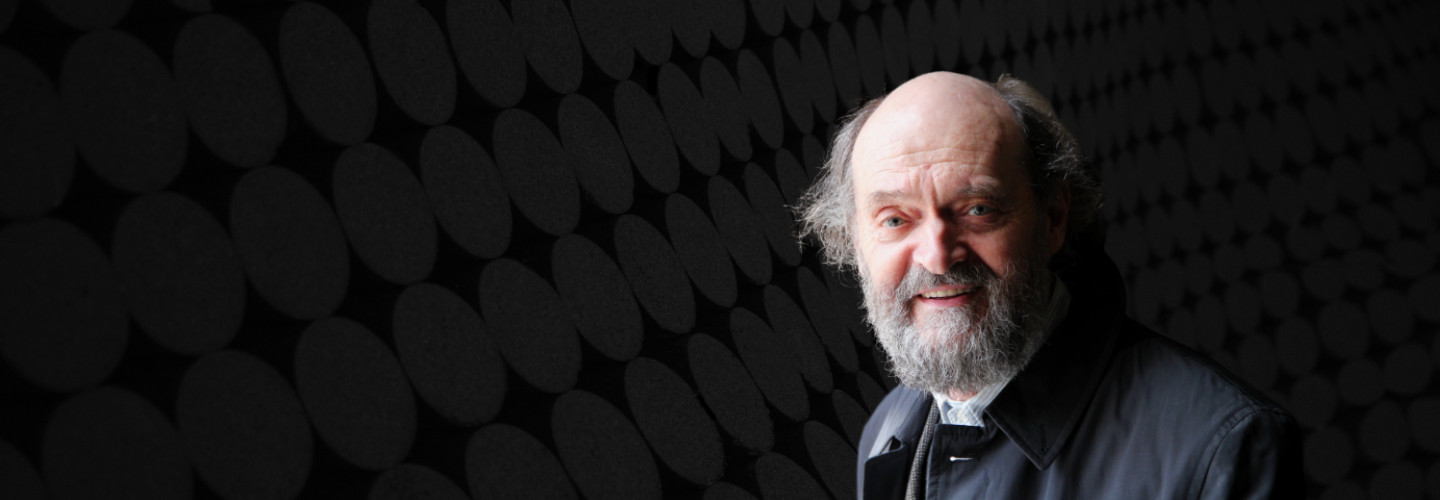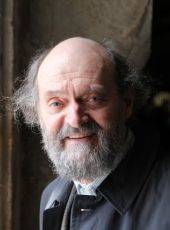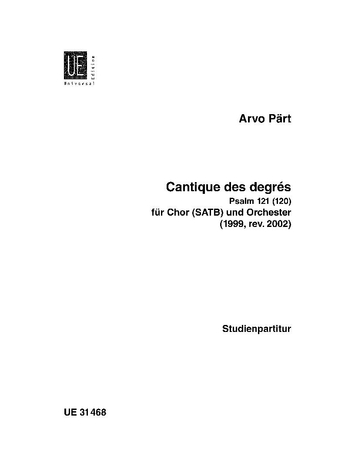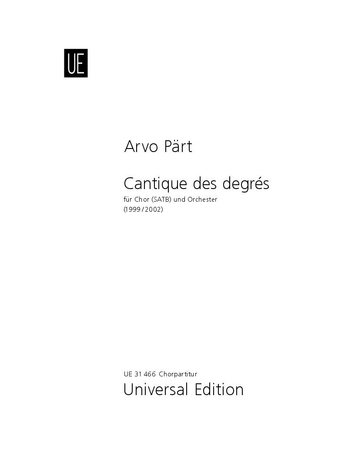

Arvo Pärt
Cantique des degrés
Short instrumentation: 2 2 2 2 - 4 2 2 1 - timp, perc, str
Duration: 7'
Dedication: À Son Altesse Sérénissime le Prince Rainier III de Monaco
Choir: SATB
Instrumentation details:
1st flute
2nd flute
1st oboe
2nd oboe
1st clarinet in Bb
2nd clarinet in Bb
1st bassoon
2nd bassoon
1st horn in F
2nd horn in F
3rd horn in F
4th horn in F
1st trumpet in C
2nd trumpet in C
1st trombone
2nd trombone
tuba
timpani
percussion
violin I
violin II
viola
violoncello
contrabass
Pärt - Cantique des degrés for mixed choir and orchestra
Printed/Digital
Translation, reprints and more

Arvo Pärt
Pärt: Cantique des degrésOrchestration: für gemischten Chor und Orchester
Type: Klavierauszug
Language: Lateinisch

Arvo Pärt
Pärt: Cantique des degrés for satb choir and orchestraOrchestration: for mixed choir (SATB) and orchestra
Type: Studienpartitur
Language: Lateinisch

Arvo Pärt
Pärt: Cantique des degrés for satb choir and orchestraOrchestration: for mixed choir (SATB) and orchestra
Type: Chorpartitur
Language: Lateinisch
Sample pages
Audio preview
Work introduction
Following an initiative by Princess Caroline of Monaco/Hannover to commemorate the 50th anniversary of the reign of his Highness, Prince Rainier III of Monaco, composer Arvo Pärt was commissioned to compose a work for choir and orchestra. The finished work, Cantique des degrés, received its premiere on 19 November 1999 during a special service in the Cathedral of Monte-Carlo in the presence of the royal family. It was performed by the Orchestre Philharmonique and the opera choir, both of Monte-Carlo, and conducted by Estonian conductor Tõnu Kaljuste.
Cantique des degrés is based on Psalm 121 - Je lève mes yeux vers la montagne - and sung in Latin. Pärt's setting comprises eight sung verses of the psalm that lead to a final, hymn-like instrumental coda.
The tonalities of the composition progress regularly, ascending stepwise from verse to verse ("cantique des degrés"); but despite this episodic character, the overall mood of the sequences remains consistent. In this way, the two contrasting basic elements of the piece – dynamic motion and balanced repose – are united creating a harmonious whole.
